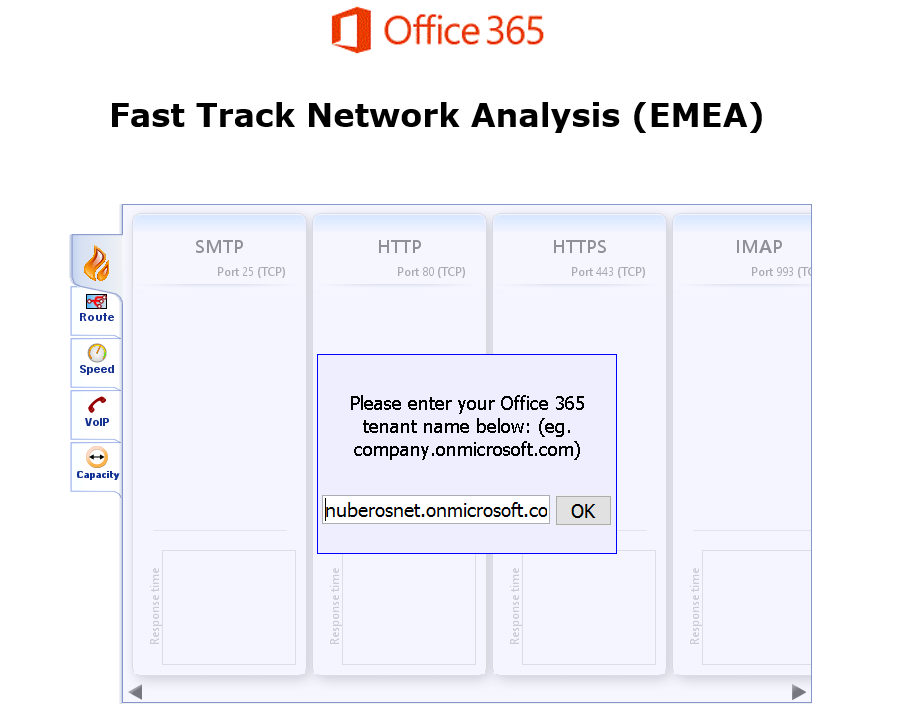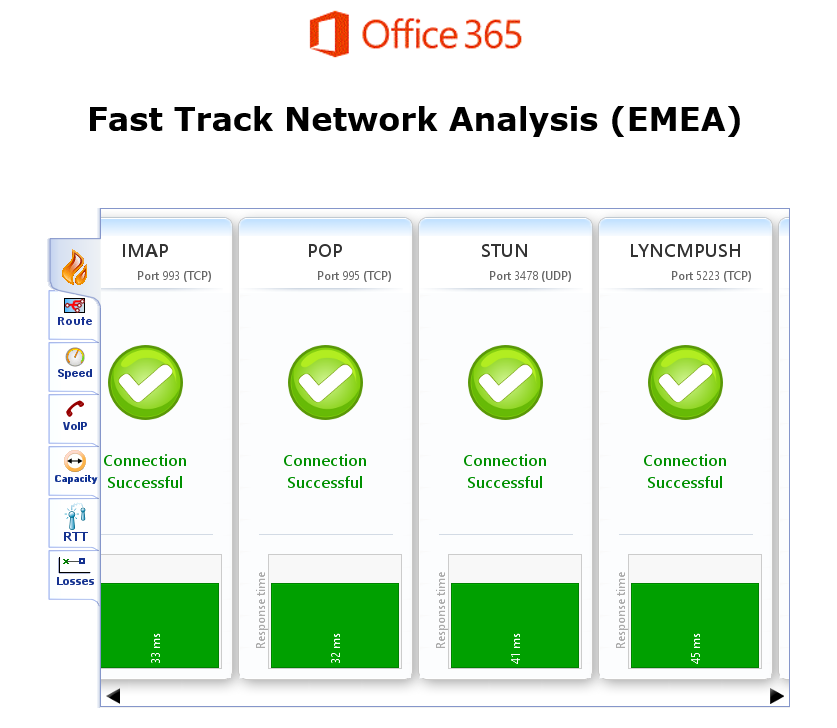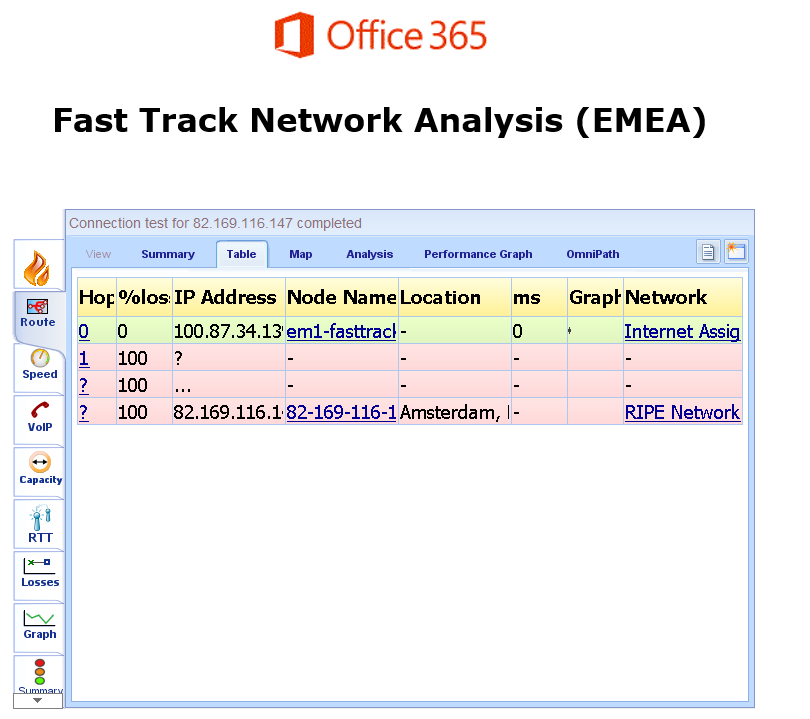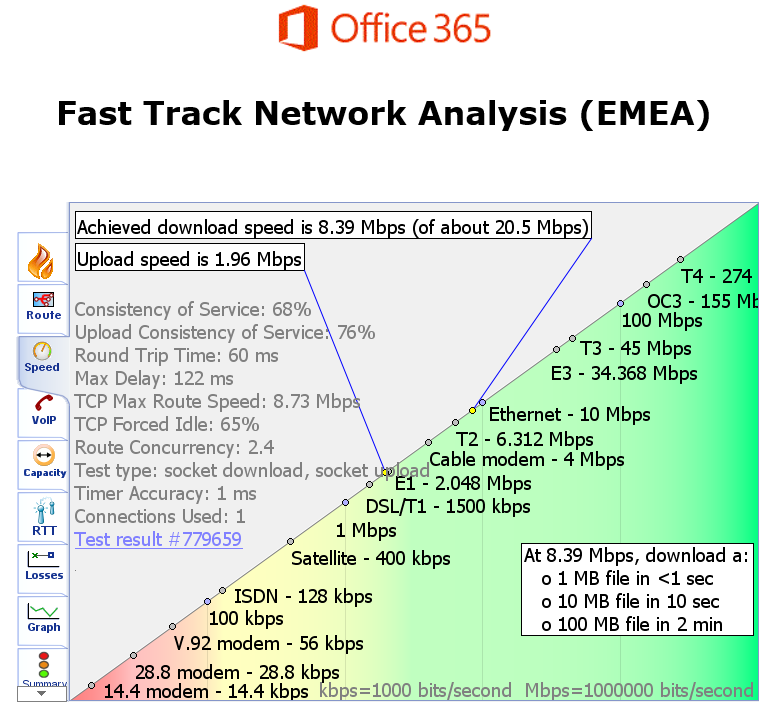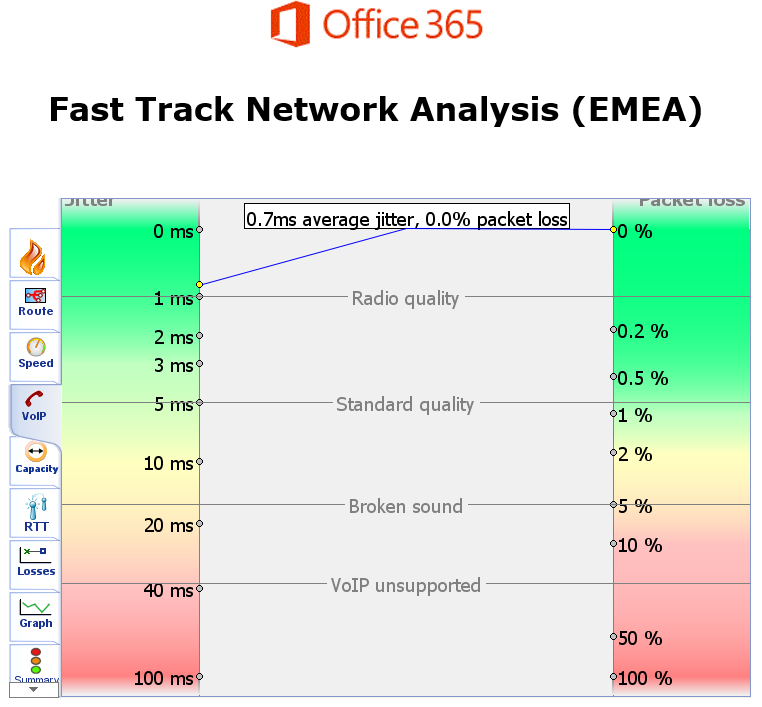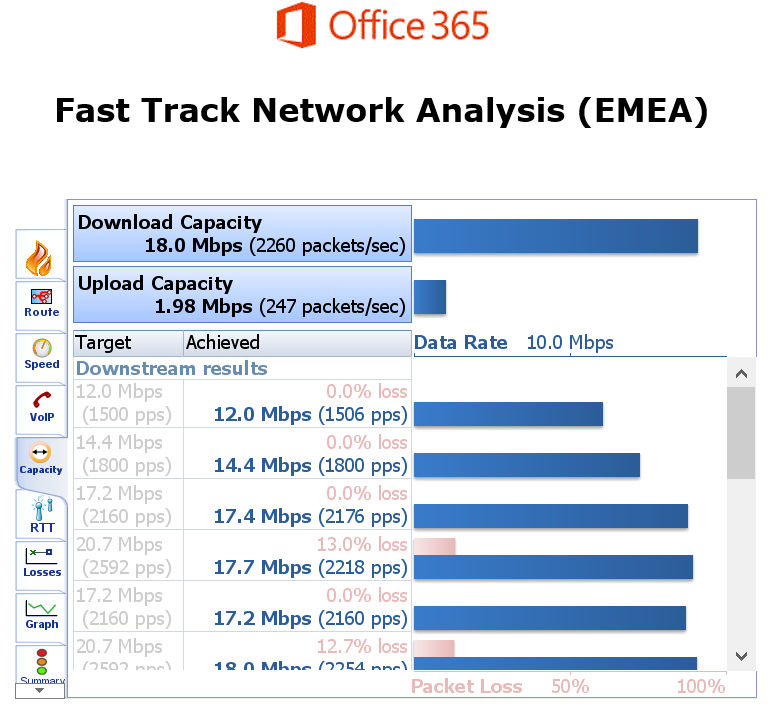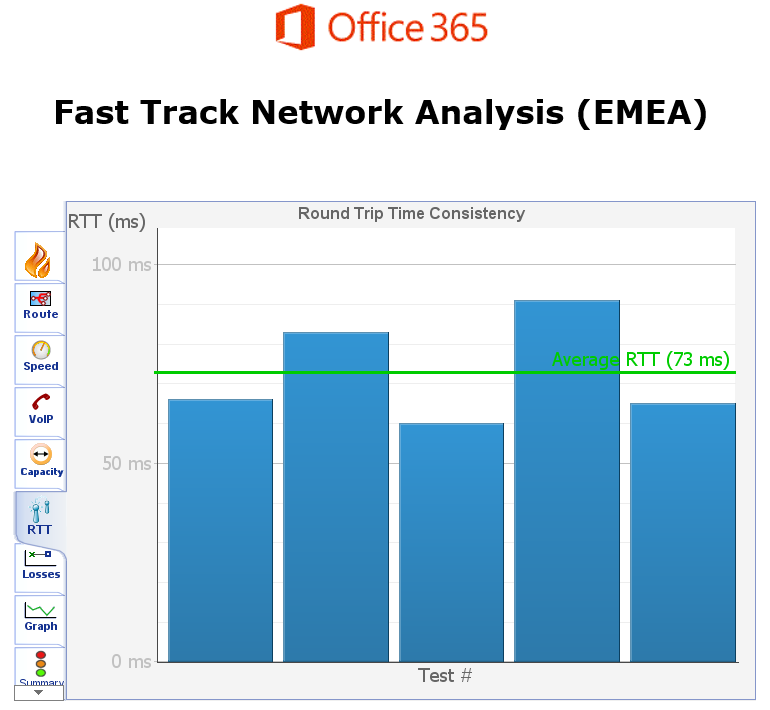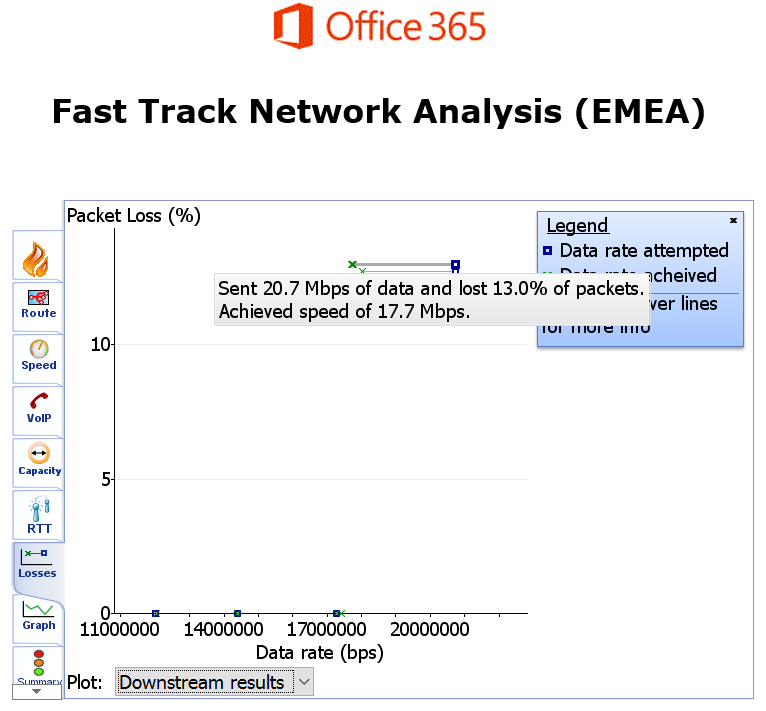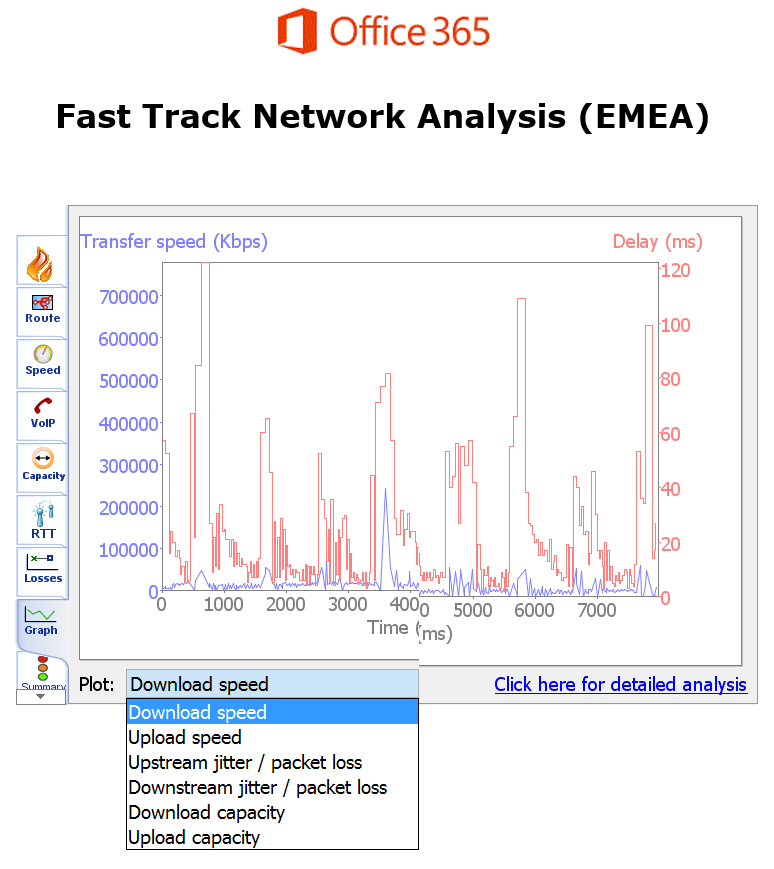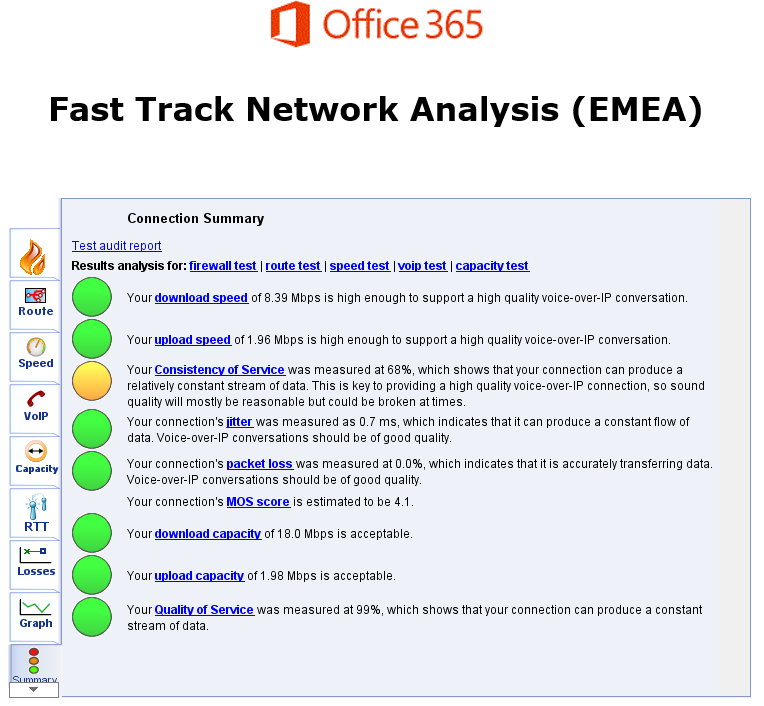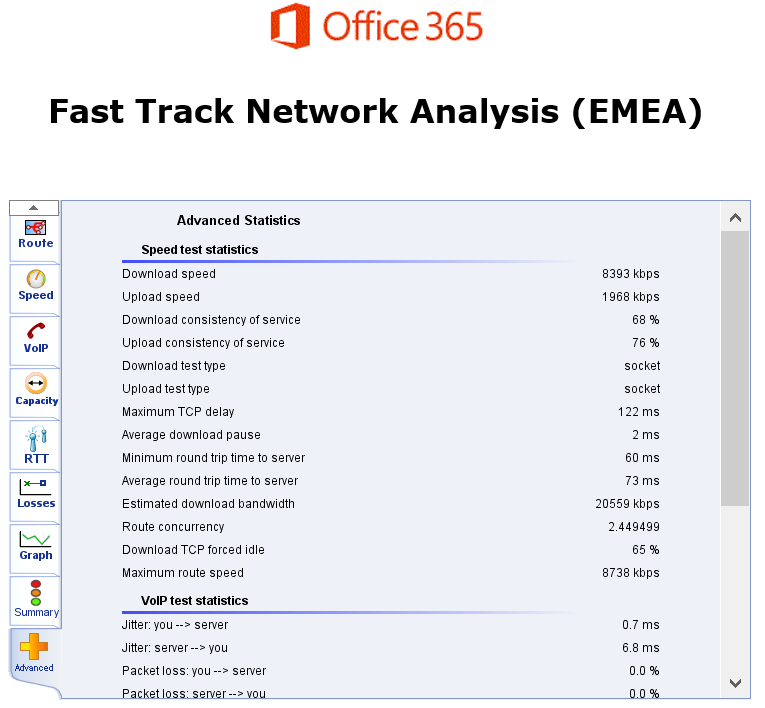FastTrack Network Analysis for Office 365
FastTrack Network Analysis for Office 365 is a tool provided by Microsoft to check whether an organization is ready to use Office 365 services. The tool analyzes several network parameters (e.g., upload speed, download speed, RTT) to identify any possible challenges that might arise when connecting to Office 365. All the information generated by the FastTrack is available to the organization to make any necessary changes to accommodate a successful deployment of Office 365.
Using FastTrack Network Analysis
FastTrack Network Analysis is web-based and available at http://em1-fasttrack.cloudapp.net/o365nwtest. When navigating to this site, you will find an unexpected surprise: FastTrack Network Analysis runs as a Java applet, which means you will be only able to use the Internet Explorer or Mozilla FireFox browsers (Microsoft Edge and Google Chrome do not support Java).
Once you install the applet and access the FastTrack Network Analysis, you provide the Office 365 tenant name to which you want to connect. The tenant name is provided in the following format: <O365Domain>.onmicrosoft.com. Once ready, click OK to start the analysis (Figure 1).
Figure 1: FastTrack Network Analysis initial configuration
The first check verifies that the ports required to connect to Office 365 are available. For instance, the tool determines if you can connect to the following ports as well as the response time: HTTP / HTTPS (80 / 443), IMAP / POP (993 / 995), etc. As you can see in Figure 2, connectivity is fine since I’m running the tool from my home network, but this might be not the case when the same check is performed from a corporate network.
Figure 2: Connectivity analysis
FastTrack identifies the route taken by traffic to Office 365 from our network (Figure 3). The network route analysis provides detailed information about the number of hops required to reach the Office 365 data center where our tenant is located, the percentage of packets lost, and information about DNS resolution.
Figure 3: Network route analysis completed by FastTrack Network Analysis Tool
The speed check in the tool (Figure 4) captures and displays information about the upload and download speeds available. It also displays the value for network parameters such as the Round Trip Time (RTT), maximum delay, and connections in use.
Figure 4: Network speed analysis
We can determine how capable our network is in terms of being able to support different types of traffic, including VoIP (generated for audio or video calls using Skype for Business or Microsoft Teams) in the VoIP tab (Figure 5). The VoIP traffic analysis determines the average jitter (0.7 ms in my case) and the percentage of packet loss. It also displays both values on a scale where you can see the following ranges of values:
- Radio Quality (Your network is fine for VoIP)
- Standard Quality (Your network is still good for VoIP)
- Broken Sound (You are going to have sound problems)
- VoIP unsupported (Your network is not ready for VoIP communications)
Figure 5: Measuring VoIP
Network capacity is evaluated in the Capacity section. This analysis determines the upload and download capacity of the network by performing several tests against a target. For each test, you will get the real PPS (Pulse Per Seconds) rate and the percentage of packets loss. As you can imagine, the tests fare worse when the target network capacity demanded by Office 365 exceeds your current network capacity.
Figure 6: Upload & download capacity analysis
The RTT tab provides the average RTT. If this value is acceptable for Office 365 connections, the RTT is shown as green (Figure 7).
Figure 7: Average RTT
FastTrack also provides some information about the percentage of packet loss when uploading or downloading data to/from Office 365 (Figure 8).
Figure 8: Packet loss analysis
The graph section contains several graphs where you can see network settings such as transfer speed versus delay, and jitter versus packet loss. (Figure 9).
Figure 9: Speed checks
The Summary tab (Figure 10) provides a good overview of the results you get with FastTrack. For each analysis type, you can see if everything is fine (shown with a green indicator) and a link to the specific analysis section.
Figure 10: Summary results
Finally, the Advanced tab (Figure 11) shows detailed information about each analysis type done by the tool. A good example is the speed test statistics that provide a rich set of network parameters covering network speed.
Figure 11: Some advanced statistics
Summary
FastTrack Network Analysis is a tool provided by Microsoft that allows tenant administrators to perform a deep analysis of network connectivity to identify any gaps, issues, or problems that could arise when connecting to Office 365 services.





